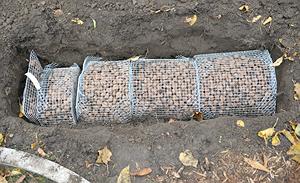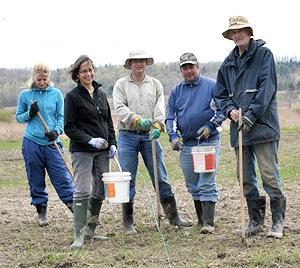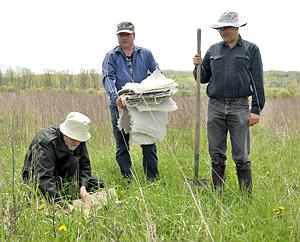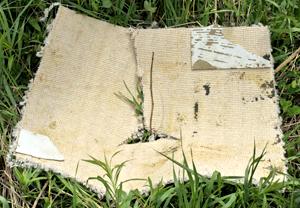A Hardy Heartnut Project
ECSONG has started a research program to select new heartnut cultivars that will bear nuts reliably at Ottawa, zone 5a. Several commercially successful heartnut cultivars (Imshu in particular) have proven to be root and wood hardy at Ottawa. The weak spot is bud hardiness. Since heartnut is a terminal grower and bearer, bud loss not only means no crop for the year, it causes a commercially unacceptable setback to tree growth. Bud hardiness is therefore the first condition that must be met before any further useful attributes can be selected for.Once we have bud hardiness, fruitfulness is the next necessity. Heartnuts are well known to be unfruitful where they are hardy, even more so than black walnut. Not only that, but seedlings often do not produce the heartnut form. We hope that at at least one or two seedlings will qualify on all counts to reliably produce acceptable heartnuts at Ottawa.
These bud-hardy trees, however many there are, can be cross pollinated. The resulting nuts will be a second generation of selection which will be planted on site and at other SONG sites to continue the selection effort. At the same time, the fruitful trees with the best nuts will be used for grafting, both on site and at other SONG sites.
A site has been chosen near Wendover ON on the organic farm of Gordon Wilkinson. The plan is to plant about 5000 open-pollinated nuts from quality trees the spring of 2011.
5 year goal: to select the resulting trees that are reliably bud hardy at Ottawa while under 1 m in height, hopefully a few hundred. Several growers have found that full grown heartnuts are more bud hardy than when small; this should give a safety factor for future work.
10-15 year goal: to select at least two cultivars from the bud-hardy trees that have nut quality required to be commercially viable at Ottawa, and to begin grafting of them on root stocks which will accept them, including heartnuts from the original planting that are not themselves bud-hardy.
20+ year goal: to select at least two further commercially viable cultivars from the offspring of the bud-hardy trees and to begin grafting of them.
On 3 May, the project began with Gordon and John Sankey laying out a 60x80 m plot. On 7 May, a local farmer ploughed and disced the site and on 8 May, we were joined by John Adams and Richard Viger to sow a first crop of buckwheat to smother the grass. Despite a sleet storm and 3C wind, the job was done. It was lousy weather for humans, but excellent for buckwheat; germination was near 100% and a good cover crop obtained except for gaps where hand sowing missed.
On 24 July, Richard joined John S. with his 10 hp 2-wheel tractor with tiller and cutter attachments. Due partly to equipment limitations and partly to human limitations on a hot day, four test areas resulted:
| Area # | 1 | 2 | 3 | 4 |
| buckwheat 8 May | yes | yes | yes | |
| tilled 24 July | yes | |||
| cut 24 July | yes | |||
| buckwheat 13 Aug | yes | yes | yes |

the four areas 13 August 2010: tilled, cut, spring buckwheat left, buckwheat missed in spring
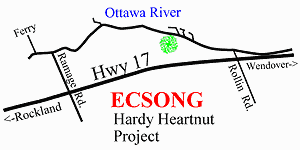
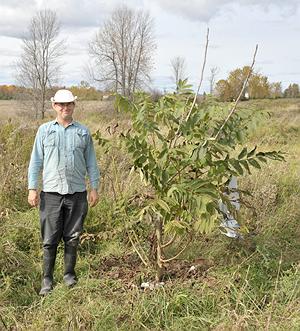
Gordon with a not-bud-hardy heartnut
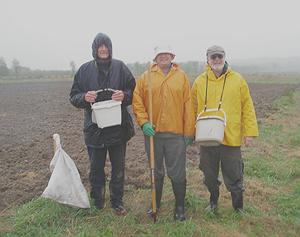
The buckwheat planting crew 8 May 2010: John Sankey, Gordon, John Adams.
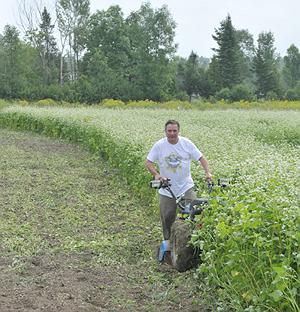
Richard Viger tilling in buckwheat 24 July 2010.
